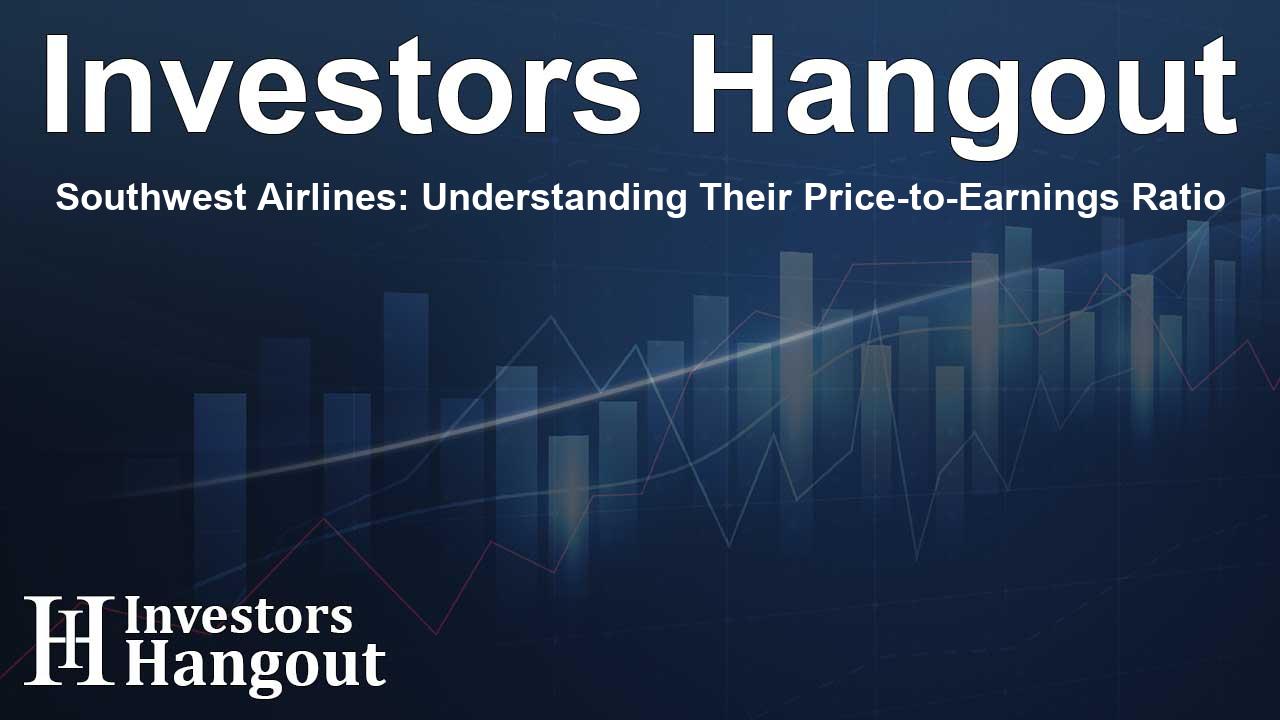Southwest Airlines: Understanding Their Price-to-Earnings Ratio

An In-Depth Analysis of Southwest Airlines Inc's P/E Ratio
In the current market, Southwest Airlines Inc. (NYSE: LUV) is witnessing a stock price at $32.03, reflecting a modest drop of 0.76%. However, on a brighter note, the company's stock has shown a rise of 2.94% over the past month and a stable growth of 2.51% in the past year. These fluctuations in stock price often raise a crucial question among shareholders: is the stock valued appropriately, or is it overvalued?
Understanding the Price-to-Earnings Ratio
The price-to-earnings (P/E) ratio serves as a crucial tool for investors looking to assess the market performance of a company. It compares the current share price to the company's earnings per share (EPS). This metric helps long-term investors evaluate how the company's current performance stacks up against its historical earnings, market data, and industry benchmarks like the S&P 500.
Insights on P/E Ratios
A higher P/E ratio suggests that investors are anticipating better future performance from the company. This can point to a stock that is potentially overvalued, yet it may also indicate investor confidence in future earnings growth, including an expectation for increased dividends. Essentially, a high P/E ratio is not always a negative signal, but rather an insight into market sentiment.
Comparison with Industry Standards
When comparing Southwest Airlines Inc.'s P/E ratio, it stands at 50.44, significantly exceeding the average P/E ratio of 10.42 within the Passenger Airlines sector. This disparity may lead shareholders to believe that Southwest Airlines Inc. is poised for superior performance compared to its peers. However, this also raises a flag on whether the stock might currently be overpriced.
Limitations of the P/E Ratio
While the P/E ratio is a valuable metric for assessing a company's market performance, it is important to recognize its limitations. A lower P/E might indicate that a company is undervalued, but it could also suggest a lack of expected future growth among investors. Therefore, it’s essential to consider additional factors, such as industry trends and the overall business cycle, when evaluating stock prices.
Informed Investment Strategies
Investors should approach the P/E ratio as one part of a comprehensive analysis. Conducting a well-rounded evaluation that combines the P/E metric with other financial indicators and qualitative insights will empower investors to make informed decisions. By understanding the dynamics influencing Southwest Airlines Inc.'s P/E ratio, shareholders can better assess potential risks and opportunities moving forward.
Frequently Asked Questions
What does the P/E ratio indicate for Southwest Airlines?
The P/E ratio shows how the market values Southwest Airlines in comparison to its earnings, indicating investor expectations about future performance.
Is a high P/E ratio always bad?
A high P/E ratio can indicate that a stock is overvalued, but it can also reflect high investor confidence in future growth potential.
Why compare Southwest Airlines' P/E to its industry average?
Comparing the P/E ratio against the industry average helps investors gauge whether Southwest is outperforming or underperforming within its sector.
What other metrics should be considered alongside the P/E?
Investors should consider revenue growth, dividend history, and operational performance metrics to gain a holistic view of the company's financial health.
Can the P/E ratio change significantly?
Yes, the P/E ratio can fluctuate due to changes in stock price, earnings reports, and shifts in market sentiment.
About The Author
Contact Dylan Bailey privately here. Or send an email with ATTN: Dylan Bailey as the subject to contact@investorshangout.com.
About Investors Hangout
Investors Hangout is a leading online stock forum for financial discussion and learning, offering a wide range of free tools and resources. It draws in traders of all levels, who exchange market knowledge, investigate trading tactics, and keep an eye on industry developments in real time. Featuring financial articles, stock message boards, quotes, charts, company profiles, and live news updates. Through cooperative learning and a wealth of informational resources, it helps users from novices creating their first portfolios to experts honing their techniques. Join Investors Hangout today: https://investorshangout.com/
The content of this article is based on factual, publicly available information and does not represent legal, financial, or investment advice. Investors Hangout does not offer financial advice, and the author is not a licensed financial advisor. Consult a qualified advisor before making any financial or investment decisions based on this article. This article should not be considered advice to purchase, sell, or hold any securities or other investments. If any of the material provided here is inaccurate, please contact us for corrections.
